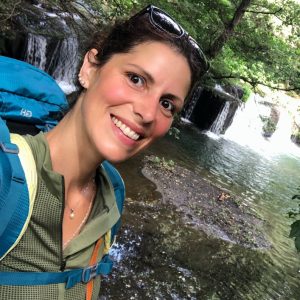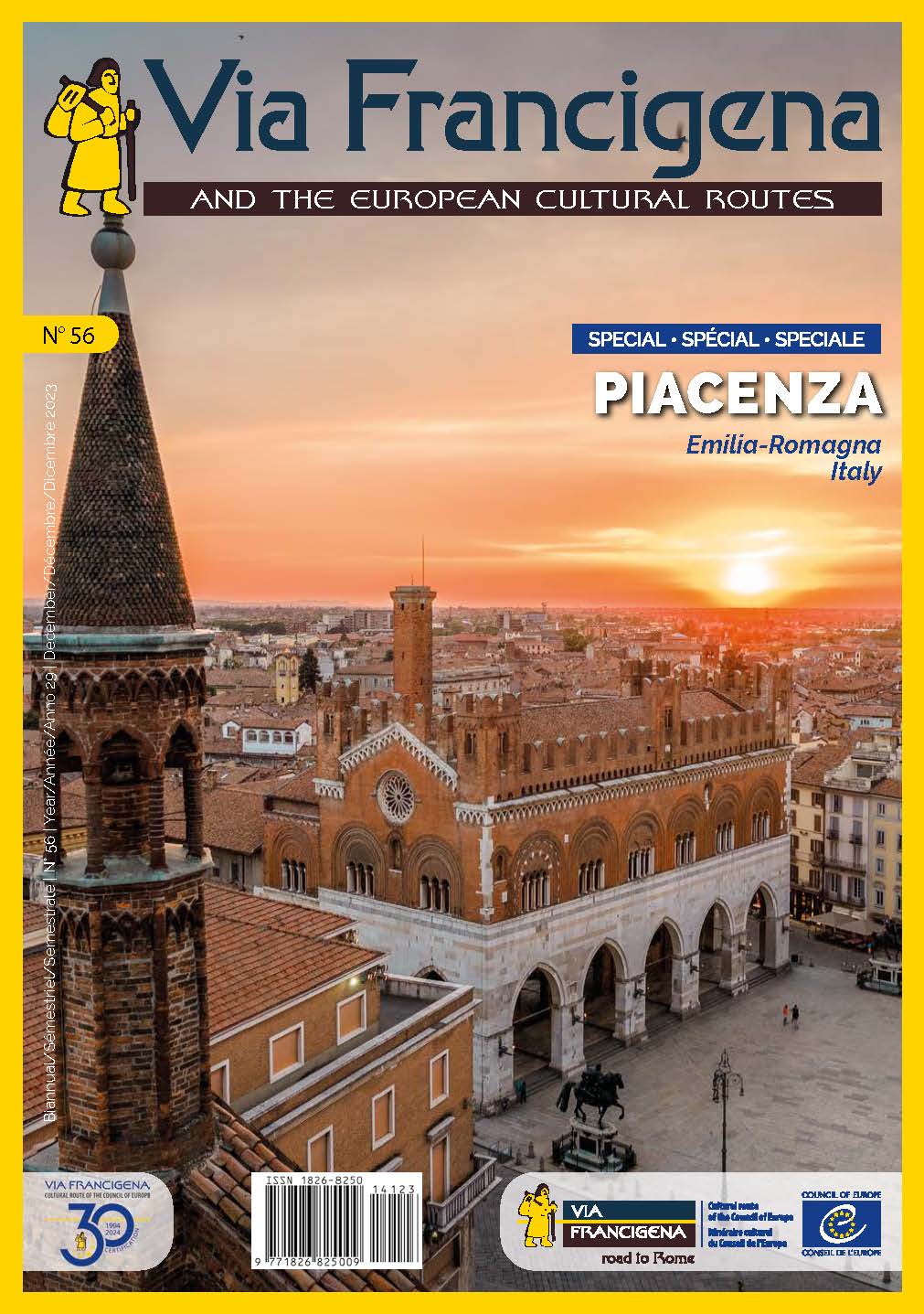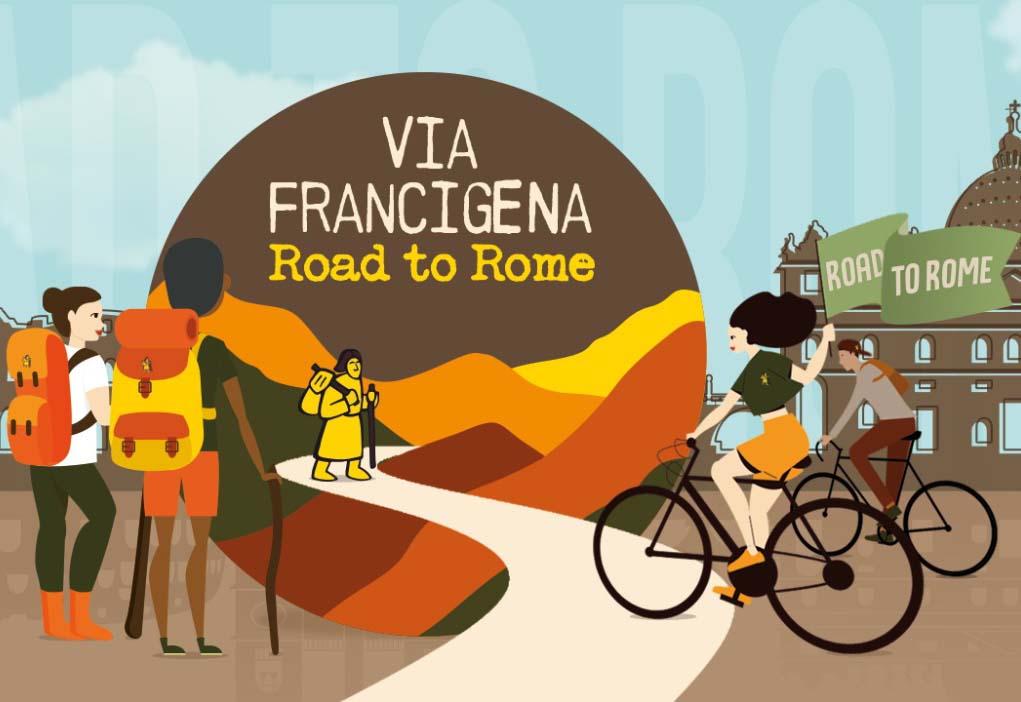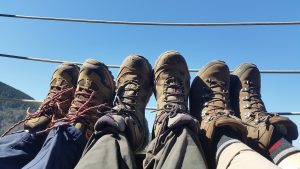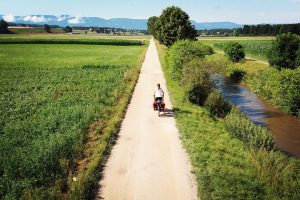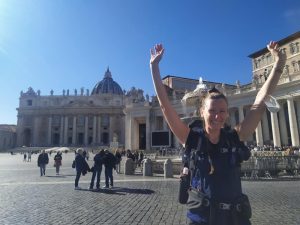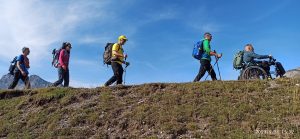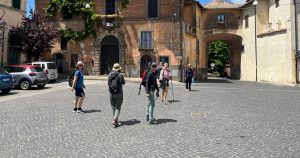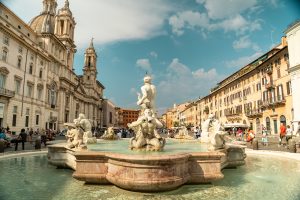Ancient spiritual practices
Yoga and walking along pilgrimage routes such as the Camino de Santiago or the Via Francigena, are two ancient practices that have helped countless people find meaning, answers to intimate questions as well as more universal ones, discover themselves and find their place in this crazy world. Both of these practices encourage inner reflection, gratitude and connection to something greater than one’s individual self.
The work to strengthen and make the body resilient and flexible through yoga postures is mirrored in the mind and spirit as we move forward in the exploration of this beautiful thousand-year-old philosophy. Alongside the physical discipline, you enter the mental and spiritual worlds. Besides the obvious accomplishment of the body, meditation and concentration are tools for achieving a state of inner peace and connection with yourself and the universe. Among the meanings of the word yoga, there is precisely the concept of union, i.e. bringing together the three aspects of existence: body, spirit, and mind.
Cammini are spiritual routes that take pilgrims to religious or spiritual destinations such as Santiago de Compostela, Rome, and Jerusalem. These routes require a physical and mental commitment, and they offer individuals the opportunity to devote time to themselves and their spirituality. Walking long distances can be an exhausting experience, but it is certainly also very rewarding and enlightening. You experience time differently, while closely observing the surrounding landscape and breathing fresh, regenerating air.
👉🏻 Also read “How to train for a pilgrimage: tips and exercises”
The power of yoga originated in India but has since been adopted by people all over the world. Likewise, we find men, women, and children from all nationalities and backgrounds – whether in Spain or Italy or elsewhere – along modern pilgrimage routes. Everywhere, regardless of a country’s cultural history and personal circumstances, people seek well-being and serenity, and in many ways yoga and modern pilgrimage routes are complementary. Both encourage inner reflection, gratitude and connection to something greater. Moreover, both can be practised alone or in groups and can offer an experience of community and support.
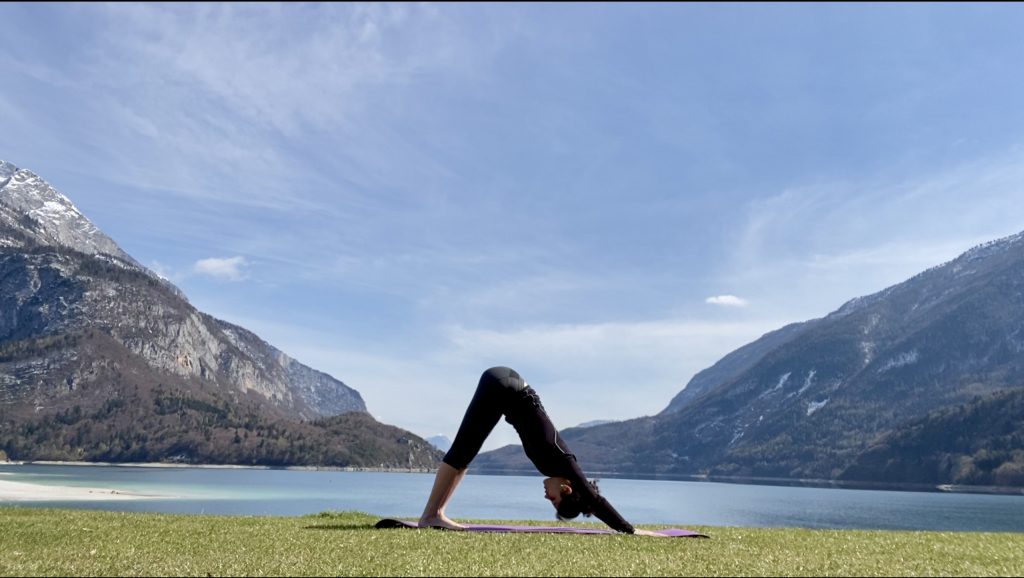
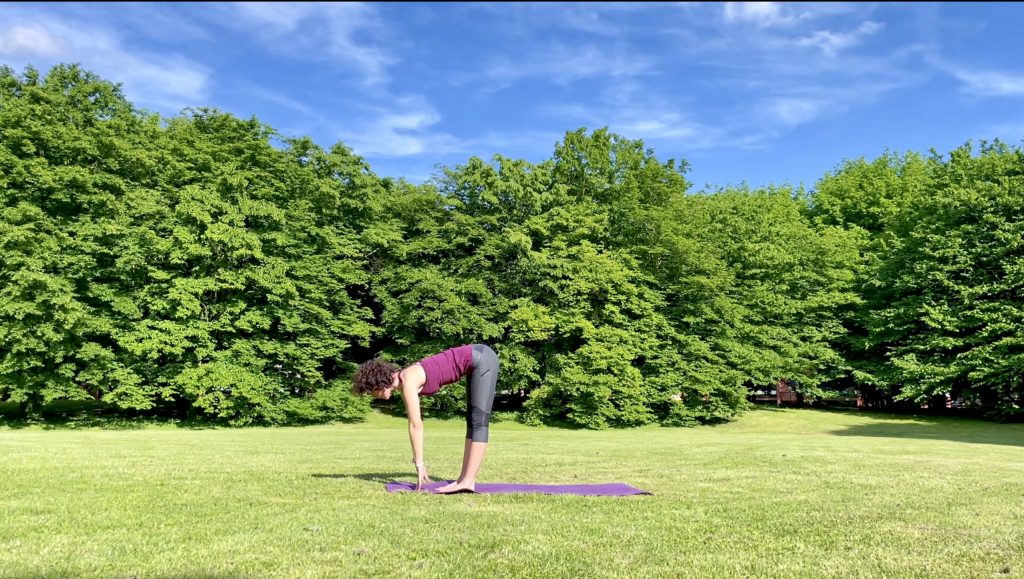
Love for research and peace
I cannot fail to mention the drive of loving-kindness that characterises yoga as well as walking. Whether you are performing yoga postures (called asanas in Sanskrit) or walking a stretch of the Via Francigena, the protagonist of the action is imbued with a sense of peace that floods both spirit and context. And the further you proceed in practice, the greater this sense of calm and balance becomes.
We are all, after all, searching for a truth about our mission in this life; some do not ask the question, others fill their time not to think about it. Those like me, we continue the search. We seek support, a contact with the earth that is strong and centred but at the same time gentle and benevolent. The seeker has a more suffering destiny, is more sensitive because he pays more attention and allows himself to be captivated by awareness. The search drives us to want to see clearly, even where what we see may not be pleasant. But in sensitivity, calmness also grows, if we can guide our search with mind and heart. A non-judgmental, but purely observing consciousness can succeed in feeling deeply while maintaining a state of peace, pure and light.
Then easily those who enjoy walking or practising yoga will be open and curious people, ready to listen to others and to themselves. They are usually peaceful and kind people, those who really believe in it. And we are known to become similar to those we frequent most, so it will be true that those who frequent yogis or walkers will easily become a peaceful and light soul. Then, as is obvious and human, there are also several exceptions, the rigid and obsessed extremes. The way I see it, in order to feel these practices as your own, you have to adept them to your own reality and your own life, respecting others’ visions but also your own needs.
Desikachar, an extraordinary yoga master of modern times, maintains that it is yoga that must adapt to the practitioner and not vice versa. Very humbly, I fully endorse this philosophy and find that it also fits perfectly with the attitude you should have in order to fully experience a walking itinerary. Each in his or her own way, with respect and kindness towards others but also – let us repeat it – towards oneself, can experience the joys of these two practices in the best version for each.
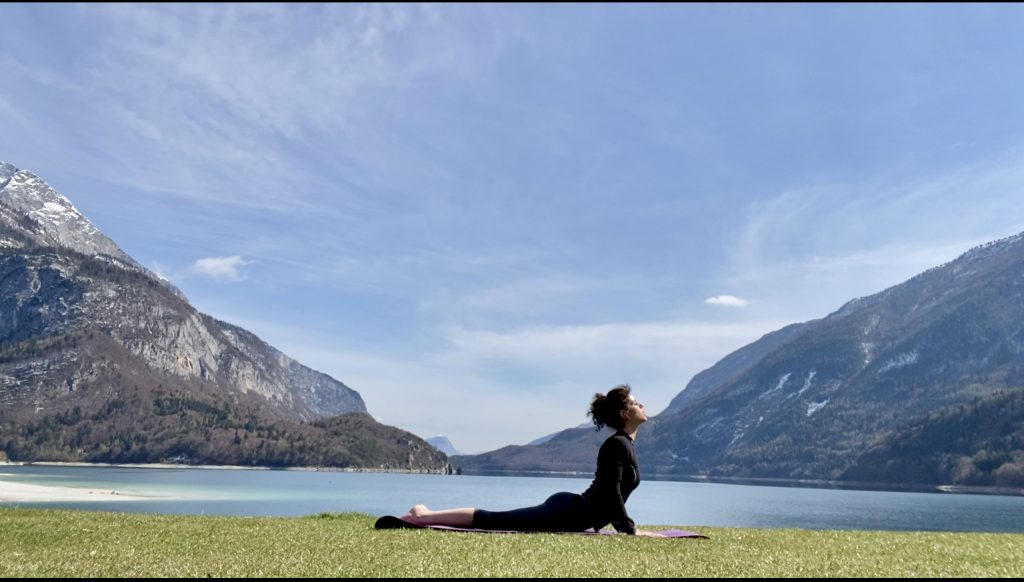
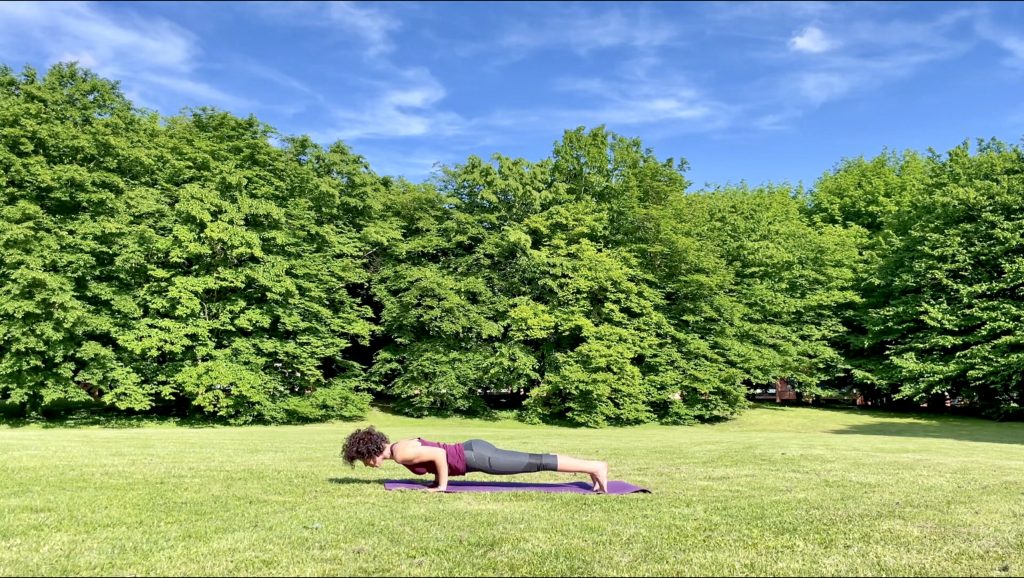
Towards a common spiritual dimension
I find it fascinating to observe the different ways in which yoga and walking can complement each other and help develop a more complete spiritual practice.
From a physical point of view: yoga helps to develop strength, flexibility and body awareness, in a harmonious and healthy way; walks can be very tiring and exhausting, but they certainly restore full awareness of the body in space and of our faculties of endurance and strength. They are a great exercise for the upper body, shoulders, legs, as well as the head!
Mental: yoga helps reduce stress and tension by focusing on inner concentration both in practice and through e.g. pranayama exercises (breathing techniques); walks can relieve mental pressures by shifting concentration to the physicality of movement and attention to our surroundings, step by step. In different ways, yoga and walks help to develop a greater awareness and understanding of ourselves and the world around us, in a light-hearted way, somewhat like a kind of Mindfulness (the practice of consciously and non-judgmentally paying attention to one’s thoughts, emotions and sensations in the present moment).
Spiritual: yoga and walks have a profound spiritual value: yoga through practical and guided meditation while walks respond to the meaning taken on by places over the centuries, some read the religious storyline others seek the threads of their own history.
Community: yoga and walks can offer opportunities to meet others who share the same spiritual interests, creating a network of support and inspiration. The sense of belonging to a group becomes a powerful healing tool, one feels less alone and misunderstood. In both, however, it is important not to be instrumentalised by fashions, not to lapse into obligations that respond to a sometimes sterile and superficial market. An intimate and spiritual practice must be guided by respect and love, not appearance, not ego.
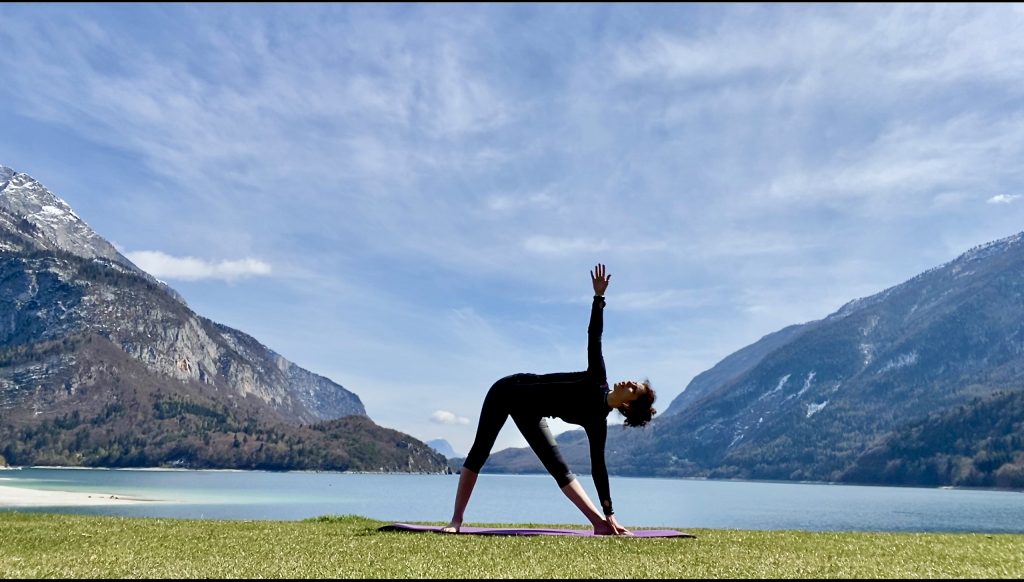
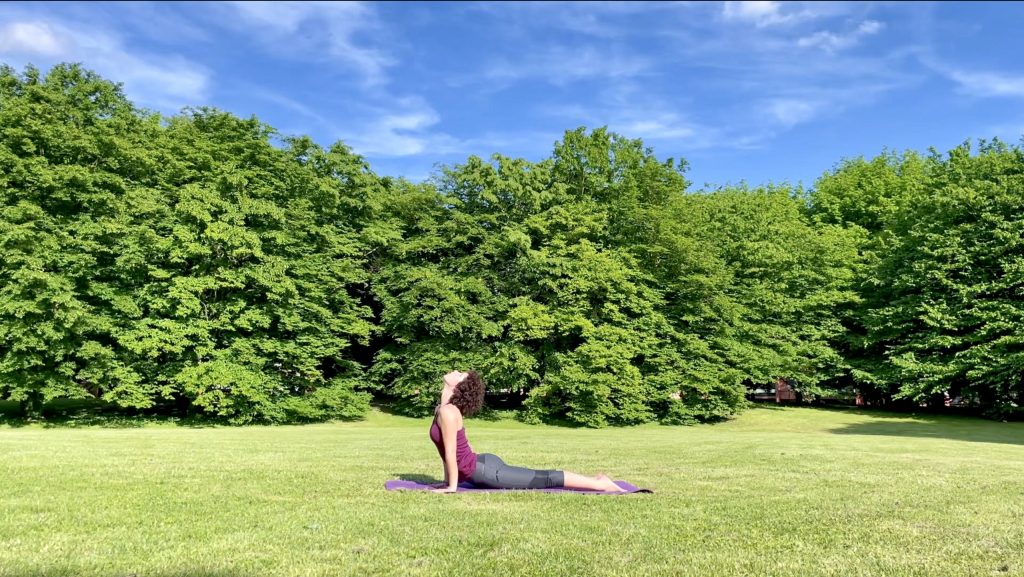
Our movements leave traces
As I walk, I listen to my heartbeat. Through breathing techniques, I can slow down my heartbeat.
Yoga teaches us to focus on the here and now. While walking, we focus on the basic needs that arise moment by moment, living only in the present.
With yoga, we centre our body and mind on the practice, on the mat that ideally represents mother earth. During a walk, we try to leave a benevolent trace along the way, each step we are in touch with the earth, whether it is nature that is our host or a road that has seen centuries of history.
Our actions leave traces. Our movements during yoga practices or a walk are guided by a desire for well-being, sometimes for knowledge. The quality of observation from a new point of view prompts us to act sensitively – potentially, in the best version of these two practices – so as to leave a mark of our passage on this harmonious and peaceful earth.
Numerous poets and artists have spoken of the need to soar lightly upwards, to let go of the burdens that hold us back or weigh on our hearts. Physical burdens such as material possessions, and immaterial ones such as fears, disappointments, anxieties, past sorrows or expectations about the future. If we think about the trace we leave of our passage through this world with our earthly life, what do we want it to be? An aggressive or affectionate footprint? A harmonious mark or one of power?
I personally feel a desire to leave a loving footprint on this earth, and walking and practising yoga allow me to get closer to this goal, to at least try with strength and kindness, with perseverance and flexibility, with admiration and acceptance.
We, little ones in the world, in our here and now.

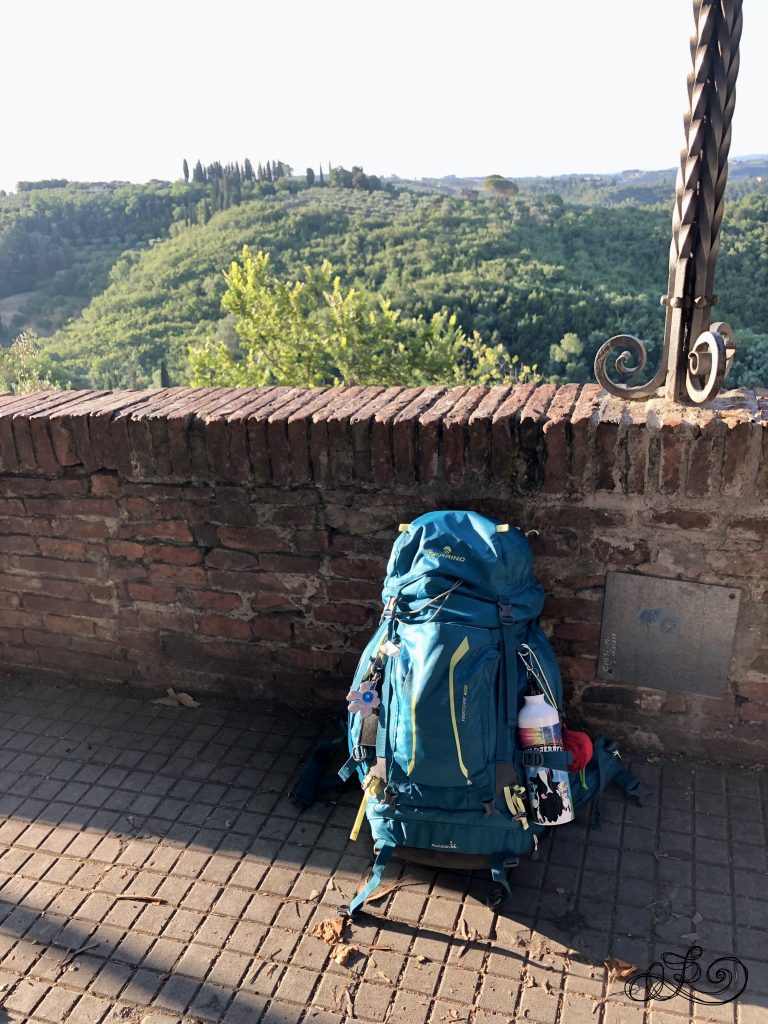
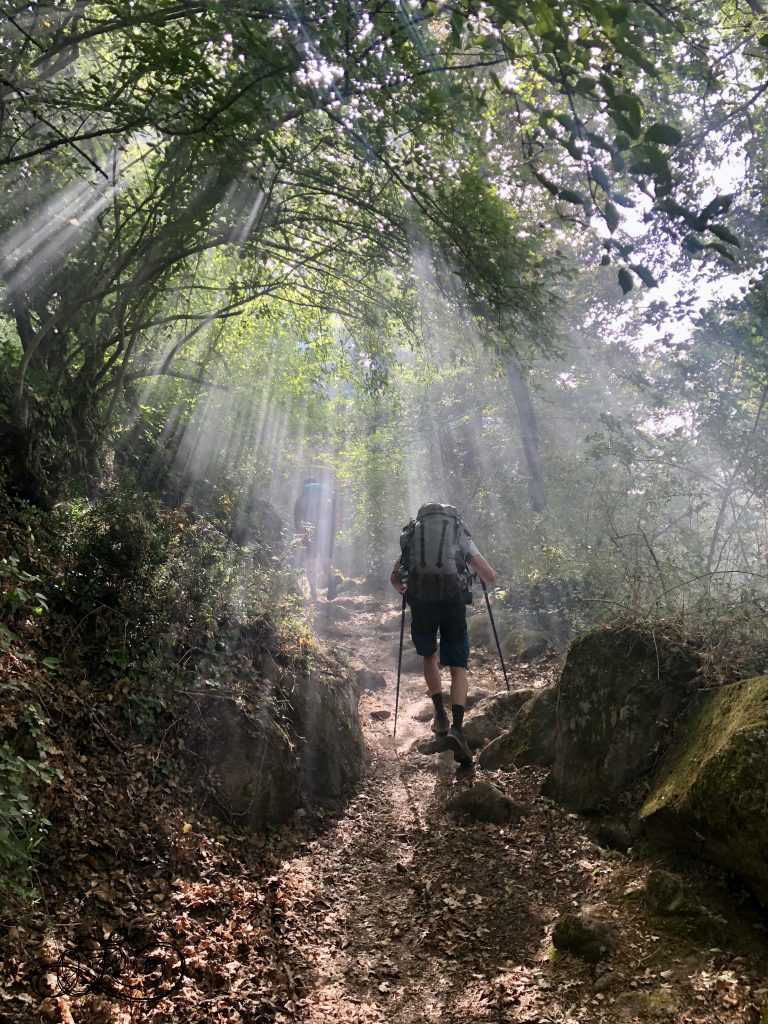
Combining yoga and walking
Although I don’t like to get up early in the morning, when I open my eyes with a day on the Via Francigena ahead of me, it suddenly fills my soul and body with energy. I love using the whole day to do very pleasant things like walking and listening to my body and meeting unfamiliar faces and discovering new landscapes! And I love doing a light yoga practice in the evening, at the end of a day’s walking, after relaxing in a nice shower. Those unfamiliar with yoga might only imagine those acrobatics as vertiginous handstands or floating legs in surreal splits, as if yogis were all dancers. Yoga is much more, or much less. Even a little morning stretch can be yoga, a controlled breath, an awareness of the spine, a moment of concentration. Even while walking we can practise yoga, as we listen to our shoulders supporting the kilos inside our backpack, as we stretch our gaze to take in every detail of a panorama, as we pause to listen to the sound of the wind on the top of a ridge, as we listen to our breath after a climb.
To reflect, that is what it’s all about. Partly within ourselves, about the relationship between us and the world, about the useful and the useless. Seeking a dialogue with the body. Aspiring to psychophysical well-being. Redimensioning, reassessing, rediscovering.
When I walk, I seem to shift my attention to the universe. When I practice yoga, I try to shift my attention within myself. And still I think about the complementarity that unites these two habits, which are part of my life.
The positive effects that both of these practices can have on physical, mental and spiritual health are innumerable; placing them side by side turns on the magic!
It is said that anyone who breathes can practise yoga. So, this axiom emphasises how fundamental the breath is and also how no one is too rigid or old or inexperienced to practise yoga. Among the different declinations, Hatha, Vinyasa, Kundalini, Bikram, Iyengar, Ashtanga… it is important to choose the one that best suits your lifestyle, tastes and characteristics.
The same goes for modern-day pilgrimages: they can be done by anyone. I have seen pilgrims with oxygen tanks or in wheelchairs. Which one you choose, then, depends on your personal needs and preferences.
When choosing a form of yoga or a long walk, it is important to consider certain elements to fully enjoy the experience.
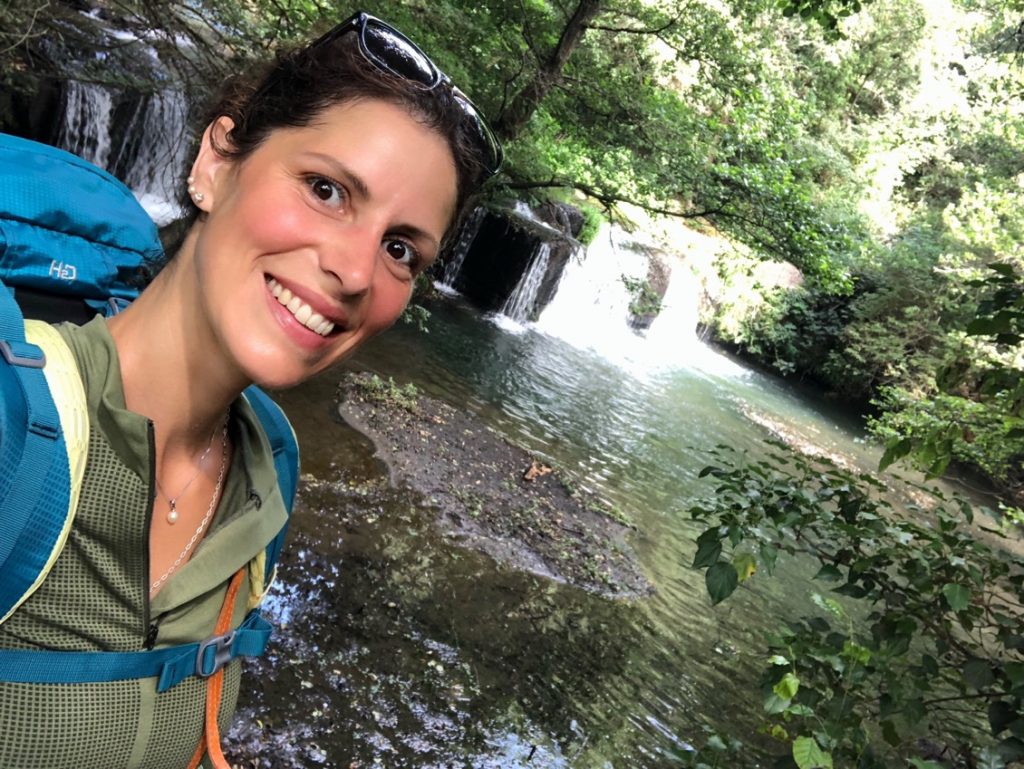
Getting down to the practical, you can be guided by:
- What is your main goal, be it stress reduction, spiritual growth or physical development;
- What style of practice do you prefer, such as a slower, more meditative yoga or a more dynamic, physical one – a more naturalistic introspective walk or a more beaten and companionable one;
- What are your spiritual values and beliefs – opt for a style of yoga or spiritual walk that aligns with these;
- Which form of practice is most accessible and would you tackle most consistently – what itinerary works for you and how many days do you have available.
Experimenting with different forms of yoga and walks can help you determine which one is best suited to your needs. The important thing is to find a practice that you feel comfortable with and, if possible, that is sustainable in the long term.
What a time well spent practising yoga and walking a cammino! Even separately, let alone by combining these two wonderful experiences: the combined use of yoga and spiritual walks can help you develop a deep balance between body, mind and spirit, and strengthen not only your physical but also your spiritual practice. I find that these could be two wonderful activities to combine, at the right times and in the right ways, a good walk combined with guided yoga sessions. Let’s talk about it 😉 Both can be a transformative experience that encourages inner reflection, gratitude and connection to something bigger than ourselves. Try it to believe!




